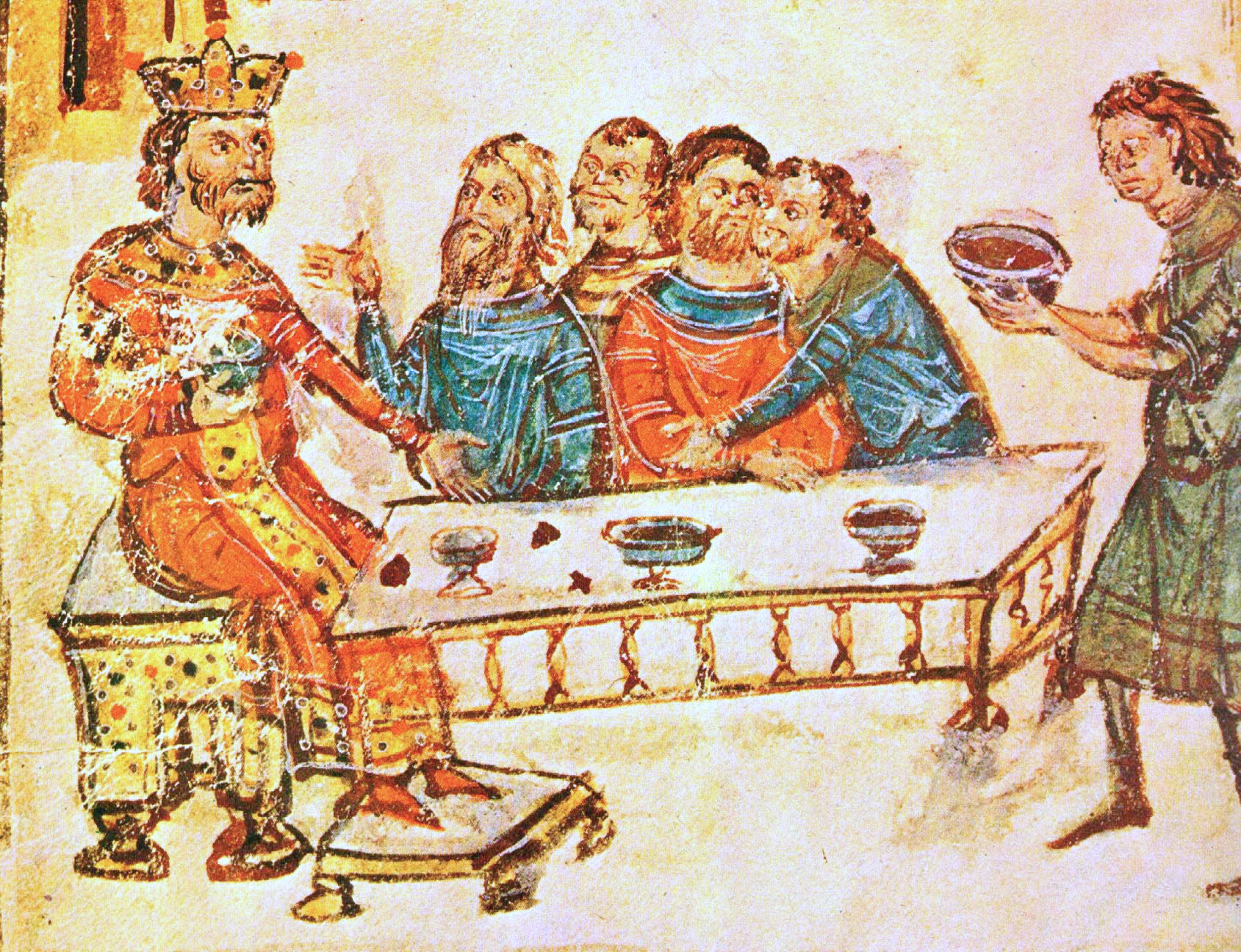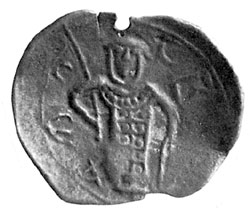|
Ivan The Russian
Ivan the Russian ( bg, Иван Русина, ''Ivan Rusina''; hu, Orosz Iván) (floruit, fl. 1288/1323–1332) was a 14th-century Bulgarian military leader of Russians, Russian origin who served List of Bulgarian monarchs, Bulgarian tsars Michael Shishman of Bulgaria, Michael Shishman and Ivan Alexander of Bulgaria, Ivan Alexander. Prior to joining the armed forces of the Second Bulgarian Empire, Ivan the Russian may have been a military commander in the service of the Kingdom of Hungary, Hungarian governor of Drobeta-Turnu Severin, Severin. Ivan the Russian rose to a high rank in the Bulgarian military in the wake of the accession of Michael Shishman to the throne. In 1323, he was in charge of the Bulgarian defence of Plovdiv during the prolonged and ultimately successful Byzantine siege of the city. In 1328, he was involved in a failed Bulgarian attempt to capture the Byzantine capital Constantinople from within. Probably taking part in the turbulent events that surrounded and ... [...More Info...] [...Related Items...] OR: [Wikipedia] [Google] [Baidu] |
Second Bulgarian Empire
The Second Bulgarian Empire (; ) was a medieval Bulgarian state that existed between 1185 and 1396. A successor to the First Bulgarian Empire, it reached the peak of its power under Tsars Kaloyan and Ivan Asen II before gradually being conquered by the Ottomans in the late 14th century. Until 1256, the Second Bulgarian Empire was the dominant power in the Balkans, defeating the Byzantine Empire in several major battles. In 1205, Emperor Kaloyan defeated the newly established Latin Empire in the Battle of Adrianople. His nephew Ivan Asen II defeated the Despotate of Epiros and made Bulgaria a regional power again. During his reign, Bulgaria spread from the Adriatic to the Black Sea and the economy flourished. In the late 13th century, however, the Empire declined under constant invasions by Mongols, Byzantines, Hungarians, and Serbs, as well as internal unrest and revolts. The 14th century saw a temporary recovery and stability, but also the peak of Balkan feudalism as centr ... [...More Info...] [...Related Items...] OR: [Wikipedia] [Google] [Baidu] |
Volhynia
Volhynia (also spelled Volynia) ( ; uk, Воли́нь, Volyn' pl, Wołyń, russian: Волы́нь, Volýnʹ, ), is a historic region in Central and Eastern Europe, between south-eastern Poland, south-western Belarus, and western Ukraine. The borders of the region are not clearly defined, but the territory that still carries the name is Volyn Oblast, in western Ukraine. Volhynia has changed hands numerous times throughout history and been divided among competing powers. For centuries it was part of the Polish-Lithuanian Commonwealth. After the Russian annexation, all of Volhynia was part of the Pale of Settlement designated by Imperial Russia on its south-western-most border. Important cities include Lutsk, Rivne, Volodymyr, Ostroh, Ustyluh, Iziaslav, Peresopnytsia, and Novohrad-Volynskyi (Zviahel). After the annexation of Volhynia by the Russian Empire as part of the Partitions of Poland, it also included the cities of Zhytomyr, Ovruch, Korosten. The city of Zviahel ... [...More Info...] [...Related Items...] OR: [Wikipedia] [Google] [Baidu] |
Oxford Dictionary Of Byzantium
The ''Oxford Dictionary of Byzantium'' (ODB) is a three-volume historical dictionary published by the English Oxford University Press. With more than 5,000 entries, it contains comprehensive information in English on topics relating to the Byzantine Empire. It was edited by Alexander Kazhdan, and was first published in 1991.''The Oxford Dictionary of Byzantium'', Oxford University Press, New York and Oxford, 1991. Kazhdan was a professor at Princeton University who became a Senior Research Associate at Dumbarton Oaks, Washington, DC, before his death. He contributed to many of the articles in the Dictionary and always signed his initials ''A.K.'' at the end of the article to indicate his contribution. Description The dictionary is available in printed and e-reference text versions from Oxford Reference Online. It covers the main historical events of Byzantium, as well as important social and religious events. It also includes biographies of eminent political and literary perso ... [...More Info...] [...Related Items...] OR: [Wikipedia] [Google] [Baidu] |
Marshal
Marshal is a term used in several official titles in various branches of society. As marshals became trusted members of the courts of Medieval Europe, the title grew in reputation. During the last few centuries, it has been used for elevated offices, such as in military rank and civilian law enforcement. In most countries, the rank of Marshal is the highest Army rank (equivalent to a five-star General of the Army in the United States). Etymology "Marshal" is an ancient loanword from Norman French (cf. modern French ''maréchal''), which in turn is borrowed from Old Frankish *' (="stable boy, keeper, servant"), being still evident in Middle Dutch ''maerscalc'', ''marscal'', and in modern Dutch ''maarschalk'' (="military chief commander"; the meaning influenced by the French use). It is cognate with Old High German ' "id.", modern German ''(Feld-)Marschall'' (="military chief commander"; the meaning again influenced by the French use). It originally and literally meant "h ... [...More Info...] [...Related Items...] OR: [Wikipedia] [Google] [Baidu] |
Byzantine Empire
The Byzantine Empire, also referred to as the Eastern Roman Empire or Byzantium, was the continuation of the Roman Empire primarily in its eastern provinces during Late Antiquity and the Middle Ages, when its capital city was Constantinople. It survived the fragmentation and fall of the Western Roman Empire in the 5th century AD and continued to exist for an additional thousand years until the fall of Constantinople to the Ottoman Empire in 1453. During most of its existence, the empire remained the most powerful economic, cultural, and military force in Europe. The terms "Byzantine Empire" and "Eastern Roman Empire" were coined after the end of the realm; its citizens continued to refer to their empire as the Roman Empire, and to themselves as Romans—a term which Greeks continued to use for themselves into Ottoman times. Although the Roman state continued and its traditions were maintained, modern historians prefer to differentiate the Byzantine Empire from Ancient Rome a ... [...More Info...] [...Related Items...] OR: [Wikipedia] [Google] [Baidu] |
Medieval Bulgarian Army
The medieval Bulgarian army was the primary military body of the First and the Second Bulgarian Empires, and some Puppet states of the former, like the Despotate of Dobruja. During the first decades after the foundation of the country, the army consisted of a Bulgar cavalry and a Slavic infantry. The core of the Bulgarian army was the heavy cavalry, which consisted of ca. 12,000 heavily armed riders. At its height in the 9th and 10th centuries, it was one of the most formidable military forces in Europe and was feared by its enemies. There are several documented cases of Byzantine commanders abandoning an invasion because of a reluctance to confront the Bulgarian army on its home territory. The army was intrinsically linked to the very existence of the Bulgarian state. Its success under Tsar Simeon I the Great marked the creation of a wide-ranging empire, and its defeat in a prolonged war of attrition in the early 11th century meant the end of Bulgarian independence. When the ... [...More Info...] [...Related Items...] OR: [Wikipedia] [Google] [Baidu] |
Jacob Svetoslav
Jacob Svetoslav ( bg, Яков Светослав, ''Yakov Svetoslav'') (ca. 1210s/1220s–1275 or 1276/1277) was a prominent 13th-century Bulgarian noble ('' bolyarin''). Bestowed the title of despot, Jacob Svetoslav was the ruler of a widely autonomous domain of the Second Bulgarian Empire most likely located around Sofia. Seeking further independence and claiming the title of Emperor of Bulgaria, he twice changed allegiance from Bulgaria to the Kingdom of Hungary and vice versa, and the Hungarians recognized his Bulgarian royal rank as their vassal and ruler of Vidin (medieval ''Bdin''). Bulgarian despot Jacob Svetoslav's exact origin is not clear, though he is known to have been distant descendant of East Slavic noble. Historian Plamen Pavlov theorizes that Jacob Svetoslav was a descendant of the princes ('' knyaze'') of Kievan Rus', and estimates his birth date as being in the 1210s or 1220s.Павлов. In the late 1250s, Jacob Svetoslav was already an influential noble. ... [...More Info...] [...Related Items...] OR: [Wikipedia] [Google] [Baidu] |
Mongol Invasion Of Rus'
The Mongol Empire invaded and conquered Kievan Rus' in the 13th century, destroying numerous southern cities, including the largest cities, Kiev (50,000 inhabitants) and Chernihiv (30,000 inhabitants), with the only major cities escaping destruction being Novgorod and Pskov, located in the north. The campaign was heralded by the Battle of the Kalka River in May 1223, which resulted in a Mongol victory over the forces of several Rus' principalities as well as the remnants of the Cumans under Köten. The Mongols retreated, having gathered their intelligence, which was the purpose of the reconnaissance-in-force. A full-scale invasion of Rus' by Batu Khan followed, from 1237 to 1242. The invasion was ended by the Mongol succession process upon the death of Ögedei Khan. All Rus' principalities were forced to submit to Mongol rule and became vassals of the Golden Horde, some of which lasted until 1480. The invasion, facilitated by the beginning of the breakup of Kievan Rus' i ... [...More Info...] [...Related Items...] OR: [Wikipedia] [Google] [Baidu] |
György Györffy
György Györffy (26 September 1917 – 19 December 2000) was a Hungarian historian, and member of the Hungarian Academy of Sciences ( hu, MTA). Biography Györffy was born in Szucság (Suceagu, today part of Baciu, Romania), Hungary the son of ethnographer István Györffy and Anna Papp. He finished his secondary schooling in the St. István Grammar School in 1935. Between 1935 and 1939 he studied at the Peter Pázmány University (now Eötvös Loránd University) under the historian Sándor Domanovszky, Elemér Mályusz, and the linguist and turkologist Gyula Németh. Towards the end of this time he took a sabbatical around the Baltic Sea, Finland and Lapland. When he received the news of the start of World War II he returned to Hungary, arriving back in October 1939. In June 1940, he was awarded a Doctorate in Hungarian Cultural History with his thesis ("Pechenegs and Hungarians"). From September 1940 until the end of 1941 he worked in the university library as a train ... [...More Info...] [...Related Items...] OR: [Wikipedia] [Google] [Baidu] |
Hungarians
Hungarians, also known as Magyars ( ; hu, magyarok ), are a nation and ethnic group native to Hungary () and historical Hungarian lands who share a common culture, history, ancestry, and language. The Hungarian language belongs to the Uralic language family. There are an estimated 15 million ethnic Hungarians and their descendants worldwide, of whom 9.6 million live in today's Hungary. About 2–3 million Hungarians live in areas that were part of the Kingdom of Hungary before the Treaty of Trianon in 1920 and are now parts of Hungary's seven neighbouring countries, Slovakia, Ukraine, Romania, Serbia, Croatia, Slovenia, and Austria. Significant groups of people with Hungarian ancestry live in various other parts of the world, most of them in the United States, Canada, Germany, France, the United Kingdom, Chile, Brazil, Australia, and Argentina. Hungarians can be divided into several subgroups according to local linguistic and cultural characteristics; subgroups with dist ... [...More Info...] [...Related Items...] OR: [Wikipedia] [Google] [Baidu] |
Vidin
Vidin ( bg, Видин, ; Old Romanian: Diiu) is a port city on the southern bank of the Danube in north-western Bulgaria. It is close to the borders with Romania and Serbia, and is also the administrative centre of Vidin Province, as well as of the Metropolitan of Vidin (since 870). An agricultural and trade centre, Vidin has a fertile hinterland renowned for its wines. Name The name is archaically spelled as ''Widdin'' in English. Old name ''Dunonia'' itself meant "fortified hill" in Celtic with the typically ''dun'' found frequently in Celtic place names. Geography Vidin is the westernmost important Bulgarian Danube port and is situated on one of the southernmost sections of the river. The New Europe Bridge, completed in 2013, connects Vidin to the Romanian town of Calafat on the opposite bank of the Danube. Previously, a ferry located from the town was in use for that purpose. History Vidin emerged at the place of an old Celtic settlement known as ''Dunonia''. ... [...More Info...] [...Related Items...] OR: [Wikipedia] [Google] [Baidu] |
Despot (court Title)
Despot or ''despotes'' ( grc-gre, δεσπότης, despótēs, lord, master) was a senior Byzantine court title that was bestowed on the sons or sons-in-law of reigning emperors, and initially denoted the heir-apparent of the Byzantine emperor. From Byzantium it spread throughout the late medieval Balkans and was also granted in the states under Byzantine cultural influence, such as the Latin Empire, the Second Bulgarian Empire, the Serbian Empire and its successor states ( Bulgarian and sr, деспот, despót), and the Empire of Trebizond. With the political fragmentation of the period, the term gave rise to several principalities termed "despotates" which were ruled either as independent states or as appanages by princes bearing the title of despot; most notably the Despotate of Epirus, the Despotate of the Morea, the Despotate of Dobruja and the Serbian Despotate. In modern usage, the word has taken a different meaning: "despotism" is a form of government in whic ... [...More Info...] [...Related Items...] OR: [Wikipedia] [Google] [Baidu] |






